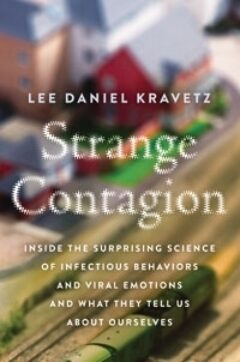Book Review: Strange Contagion
Inside the Surprising Science of Infectious Behaviors and Viral Emotions and What They Tell Us About Ourselves
Explore

During an improv acting class, my instructor told us to “scramble.” We moved around the stage as 16 strangers, randomly and rapidly, trying not to collide. Then our teacher asked us to proceed in an orderly circle. Then scramble. Then circle. Faster and faster, we were able to cohere, like a school of silvery tuna, and I got the sense we were tapping into something innate, a sensation that felt just out of reach. Is it collective consciousness? Mirror neurons? Zen master Thich Nhat Hanh speaks of “inter-being,” and has said, “We are here to awaken from the illusion of separateness.” Maybe we aren’t separate at all.
In his new book, science writer Lee Daniel Kravetz provides an interesting perspective on this. He wrote the book because his 2009 move to Palo Alto, California, happened to coincide with the start of one of the country’s worst suicide clusters there, making him a witness to what was to follow. In six months, five students from Palo Alto’s Gunn High School killed themselves by hurling themselves in front of a train. In his book, Kravetz shares how just as the flu or measles are spread, behaviors can be viral as well. You can “catch” violence. Bulimia. Obesity. Suicidal tendencies.
The media have to tread carefully, as covering a problem can lead to social contagion: Even unconscious exposure to an idea and a behavior can guide humans to unintentional mirroring. Obviously, not everyone falls prey. “Then what tips the scale?” Kravetz asks an expert, who answers, “Personal susceptibility. Environment. The unknown.” It’s that last one that makes this book an especially fascinating—and chilling—read.














